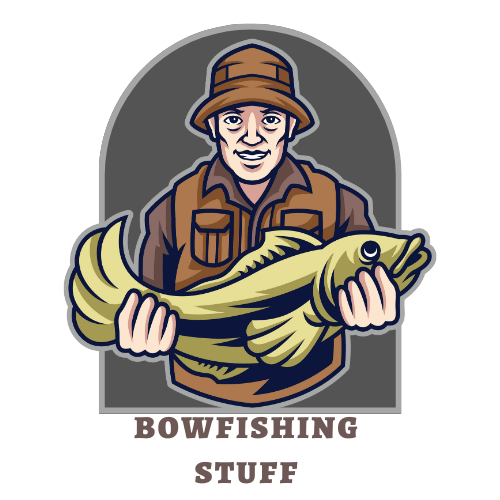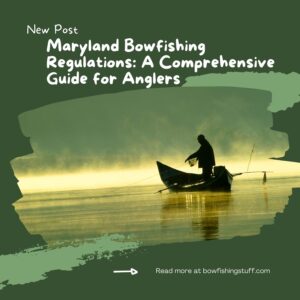Bowfishing is a fascinating hobby that is gaining popularity among enthusiasts all over the world because it combines the excitement of adventure with the peace and quiet of nature. It is an exciting and creative way to push one’s skills, enjoy the outdoors, and connect with the wealth of the water by combining the ancient art of archery with the eternal fascination of fishing.
Bowfishing is an exciting new way to fish that combines precision shooting with the thrill of casting a bow, offering adventurers the chance to try their hand at something completely new. Bowfishing, which has its origins in ancient civilizations where bows were used for both hunting and warfare, is now a popular sport among eco-conscious thrill-seekers and environmentalists.
This article delves into the interesting world of bowfishing, discussing its history, gear, tactics, and effects on marine ecosystems. Join us on this adventure to learn about the fascinating art and science of bowfishing, whether you’re a seasoned angler looking for a new pastime or a seasoned archer ready to test your talents in unfamiliar waters. Let’s figure out what makes this sport so exciting, and why it has captured the imagination of daredevils everywhere.

The History and Evolution of Bowfishing:
The past and development of bowfishing give us a fascinating look at where it came from and how important it has been to different cultures over time. Bowfishing has come a long way from being a way for old people to stay alive to being a popular sport that people do for fun today.
Origins and Historical Significance:
The mix of archery and fishing was a useful way for early humans to get food. This is where bowfishing comes from. Ancient peoples like the Native Americans, Egyptians, and Asians knew that bows and arrows were a good way to catch fish in rivers, lakes, and along the coast. Learn about the different ways these countries use bowfishing and what it means to them in their everyday lives.
From a Way to Stay Alive to a Fun Activity:
As human societies grew and fishing methods changed, bowfishing went from being a way to stay alive to a fun activity. The creation of nets and fishing rods, among other things, made traditional fishing easier to do and more efficient. But some people and groups kept practicing the traditional art of bowfishing because they liked the challenges and rewards it offered. Find out how bowfishing has stood the test of time and become a popular leisure activity.
Milestones and Improvements:
Over the ages, important events and improvements have changed the way bowfishing is done today. Bowfishing has changed a lot since bows, reels, and arrows made just for the sport were made. This has improved accuracy, range, and recovery. Learn about the key ideas and innovations that have taken bowfishing to new heights, such as the use of modern materials to make arrows and fishing reels that can be attached to a bow.
Today, bowfishing still attracts outdoor lovers all over the world who want the thrill of shooting an arrow and the challenge of fishing. It has a long and interesting past, and as technology has improved, it has attracted a large and active group of people who enjoy the unique mix of skill, precision, and adventure that this sport offers.
Bowfishing Gear and Equipment:
Bowfishing is a dynamic sport that demands specific gear and equipment tailored to the challenges of shooting fish in aquatic environments. From specialized bows to purpose-built arrows and reels, each component plays a crucial role in ensuring a successful and enjoyable bowfishing experience.
- Bows for Bowfishing: Unlike traditional archery bows, bowfishing bows are uniquely designed to meet the demands of shooting in water. Two primary types of bows are commonly used in bowfishing:a. Recurve Bows: Recurve bows are a popular choice among bowfishers due to their simplicity, reliability, and ease of use. With their compact design and fewer mechanical components, recurve bows are well-suited for maneuvering in tight spaces like boats or marshy areas. Their quick and smooth draw also allows for rapid shooting, making them ideal for fast-moving targets.b. Compound Bows: Compound bows offer a blend of power and precision, making them a favorite among experienced bowfishers. Equipped with cams and pulleys, compound bows provide a let-off at full draw, reducing the strain on the shooter’s muscles during prolonged aiming. This advantage allows for longer holds when lining up shots, enhancing accuracy and success rates.
- Arrows for Bowfishing: Bowfishing arrows, also known as fish arrows or bolts, are specially designed for the unique challenges posed by aquatic environments. Key features of bowfishing arrows include:a. Heavy-Duty Construction: Bowfishing arrows are typically constructed from durable materials like fiberglass or carbon, ensuring they can withstand the rigors of shooting into water and potentially encountering rocks or other obstacles.b. Barbed Tips: Instead of the pointed tips used in traditional archery, bowfishing arrows feature barbed tips that prevent fish from easily detaching after being shot. This design secures the catch and aids in retrieval.c. Slides and Stops: To prevent the arrow from completely submerging or disappearing into the water, bowfishing arrows often have slides or stops, which allow the arrow to float or remain partially above the water’s surface.
- Reels for Bowfishing: Bowfishing reels are essential for controlling and retrieving arrows once they have been shot. There are two main types of bowfishing reels:a. Hand-Wrapped Reels: Hand-wrapped reels are manually operated by winding the fishing line around the spool by hand. While simple and cost-effective, they require more skill and practice to use effectively.b. Retriever Reels: Retriever reels are more advanced and user-friendly. They automatically retrieve the line with the press of a button, making it easier to bring in both the arrow and the catch. This type of reel is favored by many bowfishers for its convenience and speed.
By understanding the intricacies of bowfishing gear and selecting the right equipment suited to individual preferences and skill levels, bowfishers can embark on their aquatic adventures fully equipped for success and satisfaction.
Bowfishing Techniques and Tips:
Bowfishing is an exciting and challenging sport that requires a unique set of techniques and skills to master. From precision shooting to adapting to the ever-changing aquatic environment, bowfishers must employ various strategies to increase their chances of success. Here are some key bowfishing techniques and practical tips to help enthusiasts enhance their accuracy and land their prized catch:
Bowfishing Techniques:
a. Snap Shooting: Snap shooting is a technique that involves quickly drawing, aiming, and releasing the arrow without taking the time to anchor at full draw. This method is particularly useful when targeting fast-moving fish or when visibility is limited. It requires a swift and instinctive response to ensure accurate shots.
b. Aiming Off: Aiming off is a strategy employed when shooting at fish submerged in water. Due to the refractive properties of water, the apparent position of the fish may differ from its actual location. Bowfishers compensate for this by aiming slightly lower than the visible target to account for the bending of light. The degree of aiming off may vary based on the fish’s depth and the shooting angle.
Tips for Accuracy and Success:
a. Practice Regularly: Like any skill, bowfishing requires consistent practice to improve accuracy and proficiency. Regular practice sessions help bowfishers hone their shooting technique and familiarize themselves with their equipment, resulting in more successful shots.
b. Know Your Equipment: Understanding the characteristics and capabilities of your bow, arrows, and reels is crucial. Each bowfisher’s setup may differ, so spend time getting accustomed to your gear’s strengths and limitations.
c. Use Polarized Sunglasses: Polarized sunglasses significantly enhance water visibility by reducing glare and surface reflections. They enable bowfishers to spot fish more easily and accurately identify targets beneath the water’s surface.
d. Choose the Right Arrows: Select arrows with appropriate weight and barbed tips suited for the fish species you intend to target. Consider the water’s depth and potential obstacles to ensure your arrows have the required stopping power and durability.
Factors to Consider:
a. Water Visibility: Water clarity plays a pivotal role in bowfishing success. Clear water allows for better target identification and aiming, while murky or turbid conditions may require closer proximity to the fish or different shooting techniques.
b. Target Identification: Accurate identification of the target species is essential for both ethical and legal reasons. Make sure to familiarize yourself with local fishing regulations and guidelines regarding the species you can and cannot target.
c. Proper Shooting Angles: Shooting angles affect arrow trajectory and penetration. Aim for a perpendicular shot when possible, as this provides the best chance of a clean and humane kill. Avoid shooting directly downward, as it may lead to shallow hits or lost arrows.
By mastering a combination of bowfishing techniques, adhering to practical tips, and considering critical factors like water visibility and target identification, bowfishers can elevate their skills and fully immerse themselves in the exhilarating world of bowfishing.
Bowfishing and Conservation:
Bowfishing is not only a thrilling sport but also an eco-friendly and sustainable method of fishing that offers several distinct advantages over traditional fishing techniques. By understanding the role of bowfishing in conservation efforts, enthusiasts can appreciate how this dynamic sport can help protect aquatic ecosystems and contribute to ecological balance.
- Eco-Friendly Aspects of Bowfishing:a. Selective Harvesting: Unlike some traditional fishing methods that involve catching large quantities of fish in one go, bowfishing allows for more selective harvesting. Bowfishers can choose specific target species, ensuring that only the intended catch is taken, while non-target species and undersized fish can be released unharmed.b. Reduced Bycatch: Traditional fishing methods often result in significant bycatch, where non-target species or unintended marine life get caught in fishing gear. In bowfishing, the risk of bycatch is minimal since the shooter visually identifies the target before releasing the arrow.c. Minimal Gear Impact: Bowfishing typically employs simple gear with minimal impact on the aquatic environment. The absence of fishing nets or lines that can become entangled in underwater structures reduces the risk of habitat damage and interference with other marine life.
- Controlling Invasive Species and Promoting Ecological Balance:a. Invasive Species Control: In many regions, invasive fish species pose a threat to native ecosystems. These invaders can outcompete native species for resources, disrupt food chains, and alter aquatic habitats. Bowfishing plays a crucial role in managing invasive populations, as it allows for targeted removal of these species, helping to restore ecological balance.b. Predator-Prey Dynamics: Bowfishing can also help regulate predator-prey dynamics in aquatic ecosystems. By targeting specific predatory species that may be overpopulated, bowfishers assist in maintaining healthy populations of prey species, preventing potential imbalances in the food web.c. Conservation Partnerships: Many bowfishing communities collaborate with conservation organizations and fisheries management agencies. These partnerships promote responsible bowfishing practices and ensure that bowfishers are informed about local regulations, target species, and conservation priorities.
- Responsible Practices for Sustainability and Habitat Protection:a. Observe Fishing Regulations: Responsible bowfishers adhere to local fishing regulations and guidelines. They stay informed about catch limits, protected species, and seasonal restrictions to prevent overfishing and protect vulnerable populations.b. Leave No Trace: Bowfishers practice “leave no trace” principles by disposing of any trash properly and not leaving behind any fishing-related debris that could harm the environment or other wildlife.c. Habitat Preservation: Bowfishers respect aquatic habitats and avoid disturbing sensitive areas, such as spawning grounds or nesting sites. This ensures the long-term sustainability of fish populations and supports the overall health of the ecosystem.
By embracing eco-friendly practices, actively engaging in invasive species control, and collaborating with conservation initiatives, bowfishers can play a vital role in safeguarding aquatic environments and fostering a harmonious coexistence between humans and nature. When approached responsibly, bowfishing becomes not only a thrilling sport but also a valuable tool for preserving the beauty and diversity of our underwater world.
Bowfishing Destinations and Safety:
Bowfishing enthusiasts have a plethora of thrilling destinations to explore, ranging from serene rivers to expansive lakes and picturesque coastal areas. However, ensuring safety is paramount when engaging in this exhilarating sport. Let’s delve into some exciting bowfishing destinations and essential safety measures to follow when bowfishing in different environments:
Bowfishing Destinations:
a. Mississippi River, USA: Known for its diverse fish population, the Mississippi River offers bowfishers opportunities to target species like carp, gar, and buffalo fish. Its wide expanse and varying currents present an exciting challenge for bowfishing enthusiasts.
b. Great Lakes, North America: The Great Lakes are a prime destination for bowfishing, with ample opportunities to target invasive species like Asian carp. Bowfishers can enjoy the stunning views and an abundance of fish in these vast freshwater bodies.
c. Florida Everglades, USA: The Everglades provide a unique bowfishing experience, with a chance to target invasive species like the Burmese python. Additionally, bowfishers can aim for species such as tilapia, bowfin, and catfish in the region’s abundant waterways.
d. Australian Coastline: Australia’s vast coastline offers excellent bowfishing opportunities, including targeting barramundi, mullet, and other species found in its coastal waters.
Safety Measures and Precautions:
a. Know Your Surroundings: Before bowfishing in any location, familiarize yourself with the terrain, potential hazards, and local wildlife. Be aware of potential boating traffic and ensure you are visible to other watercraft.
b. Wear Appropriate Safety Gear: Always wear a personal floatation device (PFD) or life jacket while bowfishing from a boat or wading in deeper waters. Additionally, consider wearing polarized sunglasses for improved visibility and protection from sunlight glare.
c. Proper Boat Handling: If bowfishing from a boat, ensure you have a good understanding of boating safety and follow all relevant regulations. Operate the boat responsibly and be cautious of low-hanging branches or other obstacles.
d. Safe Handling of Equipment: Practice safe handling of your bow and arrows at all times. Never point a loaded bow at yourself or others, and make sure to secure arrows when not in use.
Local Regulations and Permits:
a. Check Fishing Regulations: Before heading to any bowfishing destination, research local fishing regulations and any specific rules regarding bowfishing. Be aware of catch limits, prohibited species, and any seasonal restrictions.
b. Obtain the Necessary Permits: Many regions require a fishing license or specific bowfishing permit to engage in the sport legally. Ensure you obtain the appropriate permits before embarking on your bowfishing adventure.
By selecting exciting bowfishing destinations, adhering to essential safety precautions, and respecting local regulations, bowfishers can enjoy a safe and rewarding experience while preserving the beauty and integrity of our aquatic environments. Remember, responsible bowfishing practices contribute not only to personal safety but also to the conservation and sustainability of our natural resources.
Conclusion:
In conclusion, bowfishing emerges as a captivating fusion of archery and fishing, with a rich history that spans civilizations and continues to thrive as a modern recreational sport. Its eco-friendly aspects, including selective harvesting and reduced bycatch, set it apart from traditional fishing methods, showcasing its potential to contribute positively to conservation efforts. One of the key roles bowfishing plays in conservation is controlling invasive species, helping to restore ecological balance and protect native habitats. By targeting specific predators and adopting responsible practices, bowfishers become instrumental in maintaining healthy aquatic ecosystems and preserving the delicate balance of nature.
Safety remains paramount when engaging in this exhilarating pursuit. Proper equipment handling, awareness of surroundings, and adherence to local regulations ensure that bowfishers can revel in the thrill of their sport while safeguarding themselves and the environment. The diverse array of bowfishing destinations, from the meandering rivers and serene lakes to the picturesque coastlines, opens up a world of opportunities for enthusiasts to immerse themselves in the beauty of nature and experience the thrill of landing their prized catch.
As we venture into the world of bowfishing, let us remember that each arrow released holds not just excitement and challenge, but also the promise of stewardship. Responsible practices and a deep appreciation for the aquatic world allow bowfishers to become advocates for conservation, contributing to the preservation of our natural treasures for generations to come. By embracing the harmony between passion and protection, bowfishing enthusiasts can forge a powerful bond with the water’s bounty, uniting the thrill of the chase with the commitment to safeguarding the wonders of our aquatic ecosystems.
Read more:



